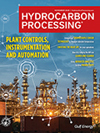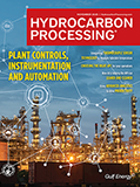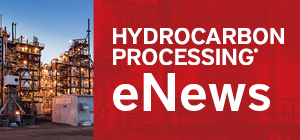Furnaces
Apply ceramic coatings to extend radiant tube life in process heaters
Process tubes in refining applications are typically steel alloy (ASTM A335 P22, P5 or P9), which contain 2.25%, 5% and 9% Cr, respectively. These grades oxidize at operating temperatures, and scale will grow continuously on the surface, often reaching 2 mm in thickness in higher-temperature/high-heat-flux units. The layers of scale are very insulating and represent a significant barrier to conductive heat transfer to the process.
Case study: Heat exchanger tube rupture and its impact on metal embrittlement
Process engineers strive to recover as much energy as is practically possible from the available process and utility streams within the constraint of the plant. To achieve this goal, traditional—and sometimes non-traditional—methods are utilized. In a steam cracker, light olefins are considered the highest-value products, and utilizing “cold energy,”
Heat Transfer: Designing electric process heater systems for catalytic regeneration
Achieving effective catalyst regeneration requires a process that produces a very high level of heat in a very efficient manner. Over the years, several different approaches have been taken to create this required heat. Traditional steam has been a popular choice, as has heated transfer media. However, these methods have limitations.
Reliability: When slow-rolling machines can cause failures, and how to avoid them
All the book learning in the world will fail if we do not use common sense. We could also say that we need to think things through and should recognize that intuitive logic can lead us astray. If that sounds like semantic banter, let us zero in on three practical field examples that illustrate the issues at hand.
Rethink fired heater design for emissions
As environmental regulations are becoming more stringent on reduced nitrogen oxide and carbon monoxide emissions, burner designs are changing to meet revised regulations. The heater design must complement the chosen burner for optimal performance. Although design duty is considered to be the main focus of the heater design, the range of heater operation and its impact on heater safety and emissions needs are often neglected.
Use submerged combustion systems to efficiently destroy hazardous plant waste
In the production of clean fuels, plastics and other hydrocarbon-based products, refineries and petrochemical facilities generate unwanted (waste) byproducts. Having no market value, the undesired byproducts must be recycled, minimized or eliminated. Depending on the feedstocks, end products and reactant materials, the unwanted materials can be gases, liquids or multiphase materials.
Advantages of using TDL analyzers for safety monitoring in combustion within HPI applications
From refining to chemical production processes, heaters play an essential role in hydrocarbon processing applications.
Executive Viewpoint: Trends in the global process furnace market
Whether it is heating process fluids to achieve enough temperature in crude atmospheric and vacuum distillation units, or reaction temperatures inside furnace tubes to produce ethylene, vinyl chloride monomer, synthetic gas and continuous catalytic reformer reactors, or simple process heating (thermal fluid), process furnaces play a critical role in refineries and petrochemical complexes.
Triple-lane layout for enhanced cracking coil performance
Ethylene is a precursor to many chemicals, fibers and plastics that are used in daily life.
Best practices in boiler maintenance and replacement
Refineries cannot afford a sudden boiler failure (FIG. 1). Regularly assessing the condition of boilers is vital.

- ITT to acquire SPX Flow for > $4.77 B, expanding leadership in highly engineered components and adjacent flow technologies 12/5
- MOL Group introduces eco-friendly Bag-in-Box packaging for lubricants 12/5
- Russia and India sign deal to build urea plant in Russia 12/5
- U.S. liquid fuels groups announce progress on E15, small refinery exemption reform 12/5
- Chinese refiners buy oil from storage, raise output with fresh import quota 12/5
- U.S. okays transactions with Lukoil gas stations outside Russia through late April 12/5




